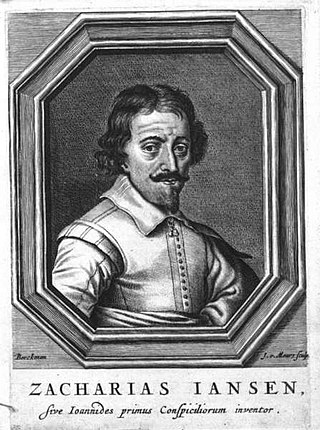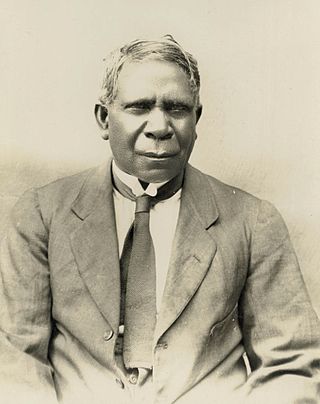Related Research Articles

Philo Taylor Farnsworth was an American inventor and television pioneer. He made many crucial contributions to the early development of all-electronic television. He is best known for his 1927 invention of the first fully functional all-electronic image pickup device, the image dissector, as well as the first fully functional and complete all-electronic television system. Farnsworth developed a television system complete with receiver and camera—which he produced commercially through the Farnsworth Television and Radio Corporation from 1938 to 1951, in Fort Wayne, Indiana.

An invention is a unique or novel device, method, composition, idea or process. An invention may be an improvement upon a machine, product, or process for increasing efficiency or lowering cost. It may also be an entirely new concept. If an idea is unique enough either as a stand alone invention or as a significant improvement over the work of others, it can be patented. A patent, if granted, gives the inventor a proprietary interest in the patent over a specific period of time, which can be licensed for financial gain.

A cotton gin—meaning "cotton engine"—is a machine that quickly and easily separates cotton fibers from their seeds, enabling much greater productivity than manual cotton separation. The fibers are then processed into various cotton goods such as calico, while any undamaged cotton is used largely for textiles like clothing. The separated seeds may be used to grow more cotton or to produce cottonseed oil.
The timeline of historic inventions is a chronological list of particularly important or significant technological inventions and their inventors, where known.

Papermaking is the manufacture of paper and cardboard, which are used widely for printing, writing, and packaging, among many other purposes. Today almost all paper is made using industrial machinery, while handmade paper survives as a specialized craft and a medium for artistic expression.
TRIZ is “the next evolutionary step in creating an organized and systematic approach to problem solving. The development and improvement of products and technologies according to TRIZ are guided by the objective Laws of Engineering System Evolution. TRIZ Problem Solving Tools and Methods are based on them.” In another description, TRIZ is "a problem-solving, analysis and forecasting tool derived from the study of patterns of invention in the global patent literature". It was developed by the Soviet inventor and science-fiction author Genrich Altshuller (1926-1998) and his colleagues, beginning in 1946. In English the name is typically rendered as the theory of inventive problem solving, and occasionally goes by the English acronym TIPS.

Zacharias Janssen; also Zacharias Jansen or Sacharias Jansen; 1585 – pre-1632) was a Dutch spectacle-maker who lived most of his life in Middelburg. He is associated with the invention of the first optical telescope and/or the first truly compound microscope, but these claims may be fabrications put forward by his son.

Paul Julius Gottlieb Nipkow was a German technician and inventor. He invented the Nipkow disk, which laid the foundation of television, since his disk was a fundamental component in the first televisions. Hundreds of stations experimented with television broadcasting using his disk in the 1920s and 1930s, until it was superseded by all-electronic systems in the 1940s.
American Inventor was a reality television series based on a competition to be named America's best inventor. It was conceived by Simon Cowell and the producers of American Idol, and premiered on ABC in March, 2006. It was organized as a competition between inventors nationally, resulting in one overall winner.
Heinz Joseph Gerber was an American inventor and businessman. An Austrian-born Jewish Holocaust survivor who immigrated in 1940, he pioneered computer-automated manufacturing systems for an array of industries. Described as the "Thomas Edison of manufacturing", he was one of the first to recognize and develop the productivity-enhancing potential for computer automation in skill-intensive industrial sectors.

This is a timeline of Australian inventions consisting of products and technology invented in Australia from pre-European-settlement in 1788 to the present. The inventions are listed in chronological order based on the date of their introduction.

Henry Sutton was an Australian designer, engineer, and inventor credited with contributions to early developments in electricity, aviation, wireless communication, photography and telephony.
Upstate New York has been the setting for inventions and businesses of international significance. The abundance of water power and the advent of canal and rail transportation provided nineteenth century Upstate New York entrepreneurs with the means to power factories and send their products to market. In the twentieth century, hydroelectric power and the New York State Thruway served the same roles. In April 2021, GlobalFoundries, a company specializing in the semiconductor industry, moved its headquarters from Silicon Valley, California to its most advanced semiconductor-chip manufacturing facility in Saratoga County, New York near a section of the Adirondack Northway, in Malta, New York.

The United States provided many inventions in the time from the Colonial Period to the Gilded Age, which were achieved by inventors who were either native-born or naturalized citizens of the United States. Copyright protection secures a person's right to his or her first-to-invent claim of the original invention in question, highlighted in Article I, Section 8, Clause 8 of the United States Constitution, which gives the following enumerated power to the United States Congress:
To promote the Progress of Science and useful Arts, by securing for limited Times to Authors and Inventors the exclusive Right to their respective Writings and Discoveries.

A timeline of United States inventions (1890–1945) encompasses the ingenuity and innovative advancements of the United States within a historical context, dating from the Progressive Era to the end of World War II, which have been achieved by inventors who are either native-born or naturalized citizens of the United States. Copyright protection secures a person's right to his or her first-to-invent claim of the original invention in question, highlighted in Article I, Section 8, Clause 8 of the United States Constitution which gives the following enumerated power to the United States Congress:
To promote the Progress of Science and useful Arts, by securing for limited Times to Authors and Inventors the exclusive Right to their respective Writings and Discoveries.
Edward Thomas Both, OBE was an Australian inventor credited with the development of a number of medical, military and general-purpose inventions. These included a low-cost "iron lung", a humidicrib, the first portable electrocardiograph and the "visitel" – a forerunner to the modern fax machine. His inventions gained him an OBE in 1940, and his work led to Both being given the moniker of the "Edison of Australia".

Alexis Lewis is an American inventor, repeat science fair winner and public speaker. She is best known for her advocacy for invention education and her humanitarian inventions. She is known to have given talks at the White House, Smithsonian, SXSW, National Maker Faire, the 2018 Social Innovation Summit, and at TEDx events. Lewis also gained repeat standing as a finalist or winner in national and international science and invention fairs, including the 2012 Broadcom MASTERS Challenge. In the course of the Spark!Lab Invent It Challenge, Lewis won pro-bono patent counsel, and holds a patent on the "Rescue Travois", granted 2015 and has one pending, on the "Emergency Mask Pod".
References
- 1 2 3 4 "The Lost Tools of Henry Hokke". Australian Broadcasting Corporation. Retrieved 6 May 2018.
- 1 2 3 4 5 6 Ambassadoor, Mancave (17 May 2012). "The Mystery of Henry Hoke". ManSpace. BUILD - Connection Magazines. Retrieved 6 May 2018.
- 1 2 "THE LOST TOOLS OF HENRY HOKE - 2014". The Screen Guide. Screen Australia. Retrieved 6 May 2018.
- 1 2 "Henry Hoke's Guide to the Misguided". Australian Network for Art and Technology. Retrieved 6 May 2018.
- ↑ "Henry Hoke: Unearthed Stories". The History Trust of South Australia. Retrieved 6 May 2018.
- ↑ "Henry Hoke Unearthed". Community Guide - Events. 5AU - Grant Bradcasters. Retrieved 6 May 2018.
- ↑ "The Lost Tools of Henry Hoke". The Canberra Times. Fairfax Media. 29 March 2013. Retrieved 6 May 2018.
- ↑ "The Lost Tools of Henry Hoke". The Science Show. Australian Broadcasting Corporation. Retrieved 7 May 2018.